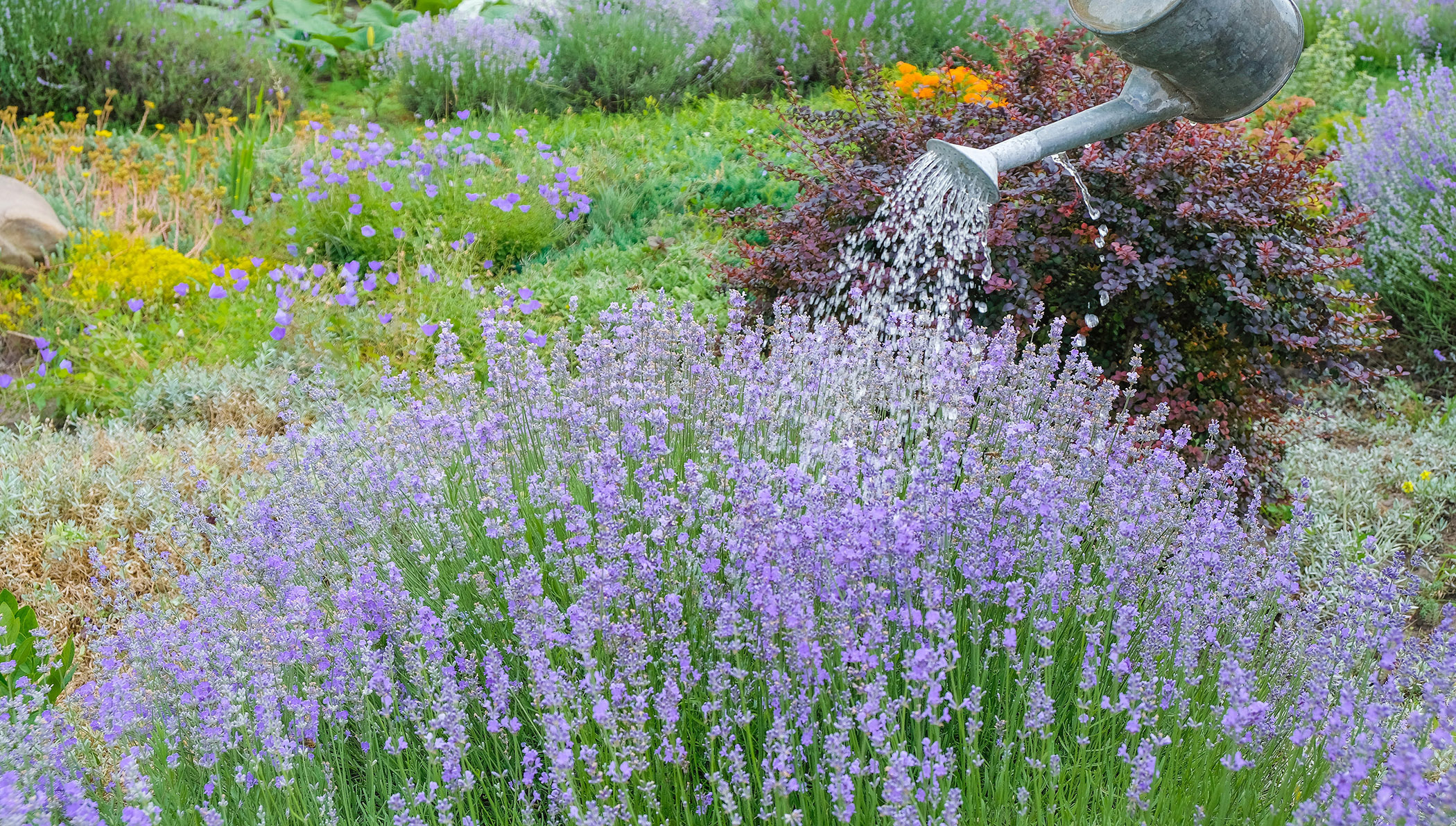Watering the garden seems simple enough, but it actually takes a little finesse to do properly. Follow these few simple rules for watering your garden to keep it healthy throughout the season.
Make sure you really do need to water

Use that handiest of garden tools, your finger, to test soil moisture levels before grabbing the hose. When the soil surface looks dry, probe down a few inches to see if it is dry several inches down. Yes? Water. No? Wait a day. (Of course, check the weather forecast for rain, first!)
Water early in the day when it does plants the most good

So, your garden does need a deep drink. When’s the best time of the day to water? You have two opportunities: early morning or late afternoon. Early morning is best when water can soak into the soil rather than evaporate due to heat or wind. Missed that window? Late afternoon is also fine, but not too late. Water on foliage needs to dry before the sun goes down so it doesn’t develop fungal diseases.
Water roots, not leaves

While it's satisfying to stand and blast the garden with the hose, it's vital to deeply soak a plant's roots. (Which is probably the same width as the plant and may be a foot or two deep.) Don't just spritz its leaves. A thumb over a hose aimed at the roots works. However, a watering wand, drip irrigation, or soaker hoses better directs water right to the root zone. The payoff for this extra effort? Deep watering encourages plants to develop deep roots that find water in the subsoil when drought strikes.
Water deeply and less frequently

Roots deprived of oxygen due to waterlogged soil may lose their ability to drink up. Watering slowly, deeply, and infrequently creates the damp-but-not-soggy soil that most plants love. Aim for moist soil 5 to 6 inches below the surface. If soil surface is really dry, water may puddle or run off. Start slowly, and once the top few inches are moist, the water will be absorbed more easily.
Mulch to conserve moisture

So, now you have the soil all nicely moist, and your plants are looking happy. Great! Keep it that way by covering the soil with a thin layer of organic mulch. For instance, compost, shredded bark, or pine needles. This will help reduce evaporation and minimize runoff. Just remember that you can have too much of a good thing. If the mulch is too thick, it can prevent moisture from reaching the roots. Aim for about a 2 inch layer, and pull mulch back from main stem to avoid rot.
A Few More Things...
- Resist the urge to water in the heat of the day, even if your plants are wilting. Plants sometimes wilt to conserve moisture, but they should perk up again when evening comes.
- If foliage edges are turning brown, you’re probably overwatering.
- Improve your soil’s capacity to hold moisture by adding organic compost to the soil. Compost helps stop clay soil from drinking up the water and starving plants. It also prevents water from draining too quickly in sandy soil.





Please login to comment.
Don't have an account?
Sign Up for free